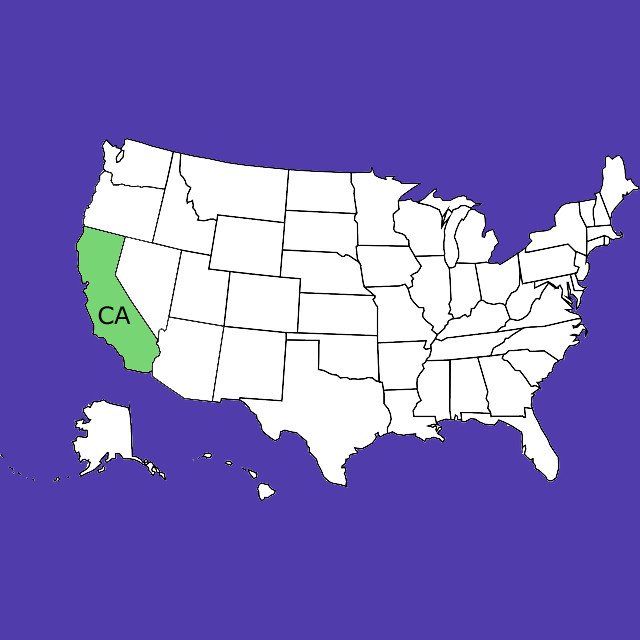Authored By : Jonathan Storper – Partner


The Medical and Adult-Use Cannabis Regulation and Safety Act (“MAUCRSA” ), which became effective January 1, 2018, is the governing law for both medical and adult use of cannabis in California. The rules are complex. Cannabis businesses seeking to do business in California should consult with an attorney prior to engaging in any project to ensure full understanding of the most up-to-date rules.
Regulatory Agencies
The Bureau of Marijuana Control (“Bureau”) oversees cannabis transportation, storage, distribution, sales, and testing. The Department of Food and Agriculture, through its CalCannabis Cultivation licensing program, oversees cannabis cultivation, issues plant tags, and is developing and implementing the track and trace program. The State Department of Public Health, through its Office of Manufactured Cannabis Safety (“OMCS”), oversees cannabis manufacturers. Finally, there are additional state agencies with smaller roles, such as the Department of Pesticides, the California State Board of Equalization, the State Water Resources Control Board, the Department of Fish and Wildlife, the Department of Justice, and state law enforcement. These State agencies promulgated emergency regulations effective through June 31, 2018 which they have now proposed be extended as amended through December 31, 2018.
Important Provisions
- Obtaining a state license requires a local jurisdiction permit to operate. Local jurisdictions are not required to permit cannabis businesses. While there is no residency requirement to own or operate a medicinal or adult-use cannabis business at the state level, local jurisdictions may attempt to impose residency restrictions. Colocation of medical and adult use/means are permitted.
- Vertical integration is permitted and there are no limitations on how many licenses a person may hold, except testing labs must remain separate from all other license types. Local governments may attempt to impose their own limits on how many licenses someone can own. Any license type, other than a testing licensee, may hold a distributor license.
- Ownership is defined as any person or entity owning a twenty percent or greater stake, or any person with the power to control management decisions. Owners are subject to background investigation. Additional financial interests, as defined, must be disclosed.
- Licensees may also seek issuance of a temporary event license to operate at a county fair or district agricultural association event, which would permit on-site cannabis consumption, provided there is no local jurisdictional ban and the licensee complies with certain other requirements (i.e., no alcohol or tobacco consumption would be allowed on premises, customers must be over twenty-one, etc.). Retailers must separately report on state designated fairground sales beginning July 1, 2018.
- California requires testing of cannabis for pesticides, mold, mildew, and other contaminants and explicitly prohibits the use of banned pesticides and sets standards for certification of organic cannabis. Businesses may be allowed to sell untested products, if labeled “untested,” for a set period of time to prevent delays or interruptions in product availability. Cannabis and cannabis products must be packaged in opaque packaging and identify infused edibles with a created universal symbol.
- Cultivators must identify their water source and obtain all necessary state and local permits for water usage. The Department of Food and Agriculture has the authority to limit the issuance of unique identifying tags (required for all legally grown plants) if there are adverse impacts to the environment caused by the cultivation. Growing or processing cannabis where these activities result in a violation of specified laws relating to the unlawful taking of fish and wildlife is a felony.
- Microbusinesses need a license from the Bureau, as well as approval from Departments of Food & Agriculture and Public Health.
- Appellation of origin standards will be established by January 1, 2021.
- Medicinal ID cards are issued at the county level.
- MAUCRSA imposed online advertising restrictions in addition to the prior laws governing advertising, adulteration, and misbranding restrictions; including no depictions of minors under 18 years of age.
- There are increased opportunities for tax collection at the state and local level. Tax levels may vary by local jurisdiction.
- MAUCRSA protected assets of licensed operators and building owners.
- MAUCRSA provided three million dollars to fund DUI impairment training and research.
- No Type 5, 5A, or 5B licenses will be issued prior to January 1, 2023.
- License fees differ between types and even within sublicense types so it is important to check the most up-to-date fees online.
- Social Equity programs provide opportunities for those with low incomes, or that live in an area impacted by the War on Drugs, have criminal records because of past cannabis prohibition and who plan to hire local workforce personnel, and other possible criteria, to obtain priority local permits, but check local jurisdictions for specifics as they vary.
Licensing
| License Type | Size | Notes |
| Type 1 —Cultivation — Specialty Outdoor; Small | Up to 5,000 sq. ft.; up to 50 mature plants | No artificial light |
| Type 1A— Cultivation — Specialty Indoor; Small | 501- 5,000 sq. ft. | Artificial light |
| Type 1B —Cultivation — Specialty Mixed-Light; Small | 2,501- 5,000 sq. it | Combination of natural and artificial light |
| Type 1C — Cultivation — Specialty Cottage; Small | Up to 2500 sq. ft for mixed light, up to 25 outdoor mature plants, or 500 sq. ft. of indoor cultivation | Combination of natural and artificial light, all on one premise |
| Type 2 —Cultivation — Small Outdoor | 5,001-10,000 sq. ft. | No artificial light |
| Type 2A— Cultivation— Small Indoor | 5,001-10,000 sq. ft. | Artificial light |
| Type 2B — Cultivation — Small Mixed-Light | 5,001-10,000 sq. ft. | Combination of natural and artificial light |
| Type 3 − Cultivation — Outdoor; Medium | 10,001 sq. ft. — 1 acre | No artificial light |
| Type 3A −Cultivation — Indoor; Medium | 10,001 sq. ft. — 22,000 sq. ft. | Artificial light |
| Type 3B−Cultivation — Mixed-Light; Medium | 10,001 sq. ft. — 22,000 sq. ft. | Combination of natural and artificial light |
| Type 4 − Cultivation; Nursery | No size designation currently available | Producing clones, immature plants, and seeds |
| Type 5 − Cultivation; Large Outdoor | + 22,000 sq. ft. | No artificial light |
| Type 5A− Cultivation; Large Indoor | + 22,000 sq. ft. | Artificial light |
| Type 5B − Cultivation; Large Mixed-Light | + 22,000 sq. ft. | Combination of natural and artificial light |
| Type 6−Manufacturer 1 | No size restrictions | Using non-volatile solvents |
| Type 7−Manufacturer 2 | No size restrictions | Using volatile solvents |
| Type 8 −Testing Laboratory | No size restrictions | Cannot own any other license type |
| Type 9 −Non Storefront Retailer | Licensed premises | Sells & delivers cannabis products exclusively by delivery |
| Type 10− Storefront Retailer | Licensed premises No size restrictions |
Sells cannabis products; open to public; may deliver |
| Type 11−Distributer | No size restrictions | Distributes cannabis products between producers and retailers |
| Type 12− Microbusinesses | Up to 10,000 sq. ft of cultivation, no size restrictions on distributor and retailer license types under this category | Must do at least 3 of these:
-Cultivation -Manufacture -Distribution -Retail |
| Type 13− Distributor Transport | Distributor Transport Only | |
| Type 14− Event Organizer | Cannabis event organizer | |
| Type – Temp Cannabis Event | Up to 4 days; allows onsite sale and consumption | |
| Type N – Infusions | Infusions (Ex.: using pre-extracted oils to create edibles, beverages, capsules, vape cartridges, tinctures or topicals | |
| Type P – Packaging | Packaging and labeling only | |
| Type S – Shared Space | Product Types: edibles, concentrates, topicals, capsules, vape cartridges, tinctures, other products
Activities: Extraction, infusion, packaging and labeling Extraction method: Butter and food-grade oil only |
|
| Type – Processor | Trimming, drying, curing, grading, and packaging and labeling of non- manufactured cannabis products |
Priority Grant of Licenses
Businesses that were operating in compliance with state law before September 1, 2016, will have priority during licensing. Cannabis businesses that were lawfully operating under California state law and with relevant local licensing before January 1, 2018, may continue operating while their applications are reviewed. The Bureau will determine whether an applicant was lawfully operating by reviewing the date on which the applicant began actively conducting the same commercial cannabis activity as the license type for which the applicant is applying, and evidence to prove compliant operations.
Medicinal cannabis businesses who opt not to apply for a state license on or before January 1, 2018, will continue to receive protections from criminal prosecution provided by state law for one year after the first state licenses are issued. However, criminal defenses do not provide protections from state regulatory enforcement beginning January 1, 2018, thereby exposing businesses operating under the prior collective or cooperative model to the risks of civil or regulatory enforcement if they continue to operate without a state or local license after January 1, 2018. In the spring of 2019, operators without a license will likely no longer be able to assert defenses to criminal prosecution under the collective or cooperative model.
Prior law required that cannabis operations be solely operated under a non-profit model. There are numerous hurdles for businesses operating under the prior law to transition to a fully regulated for profit model. Transition to a for profit model is complex. Competent California counsel should be consulted with a deep knowledge of the industry and regulatory scheme.
© Jonathan Storper
|
||||||||||




